Marc Lombard is a naval architect and his name bears remembrance of legendary yachts which made sailing history: The Figaro 2 racing yacht (read my interview with Marc here), his works for Jeanneau´s Sun Odyssey, aluminium alloy boats for Alubat, Futuna, superyachts JFA, cruising cats from Privilege, Nautitech and of course his racing boats, from IMOCA 60, down to successful mini’s and class 40 (such as the Akilaria, read here), over to trimarans.
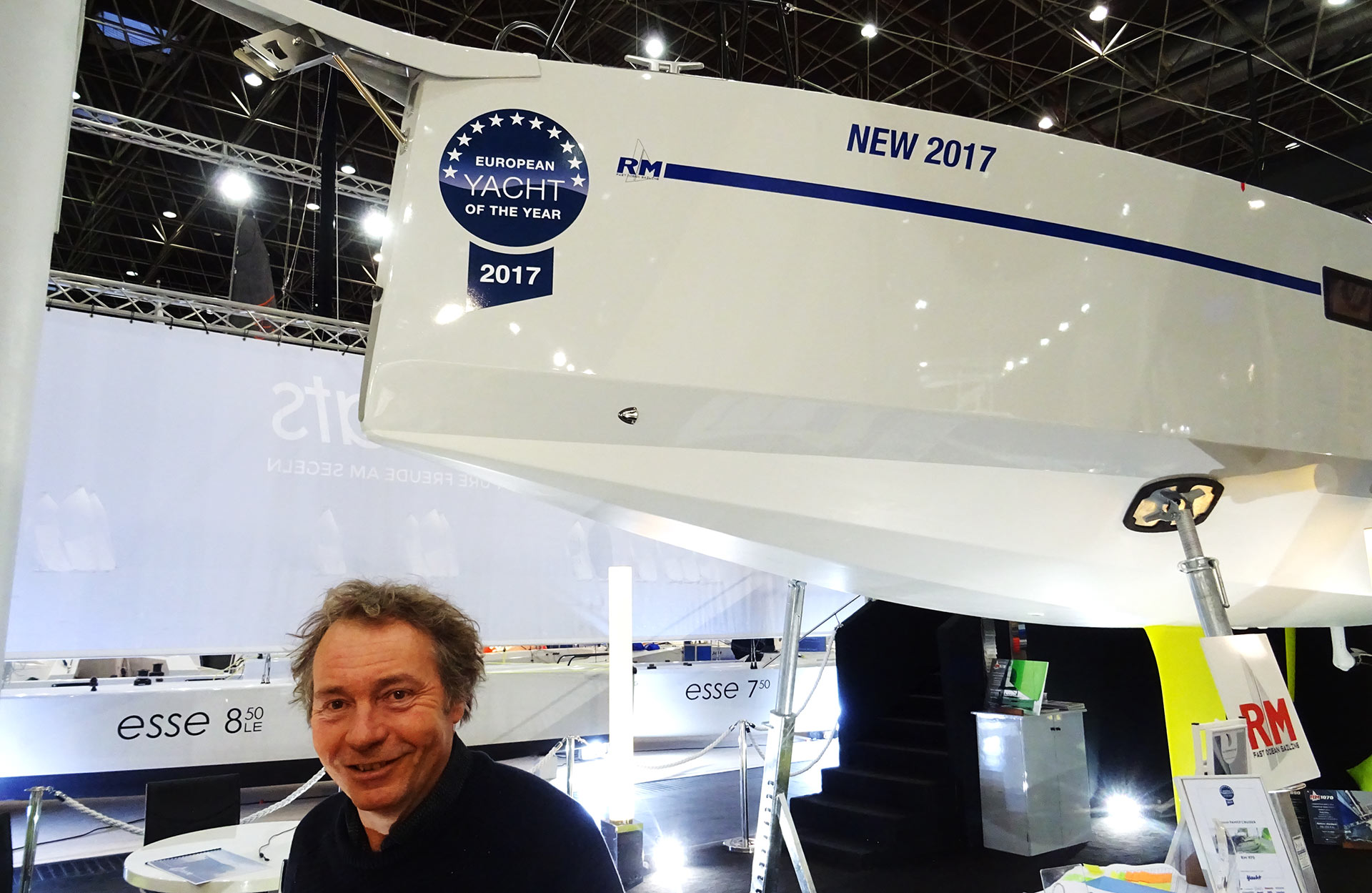
Marc Lombard is a well respected designer on the one hand – and a very hospitable sympathetic person on the other. I was lucky again to meet him during Dusseldorf Boatshow at the stand of small French boatbuilder RM.
From the first sketches to CFA
NO FRILLS SAILING.com | Lars Reisberg: “Marc, it´s such a pleasure to meeting you in person here at the Boot Dusseldorf. We are now sitting under the hull of this beautiful small 30 foot RM 9.70 which has won the prestigious title Boat of the Year 2017 – congratulations, as this is your design!”
Marc Lombard: “Thank you Lars. It´s a pleasure too. And it´s always good to see that the work of so many weeks and months pays off at the end.”
NFS.com: “Marc, today I want to talk about the very design process and how you are approaching a new project, maybe for example this RM 9.70. This is a set of six or seven questions. In the course of this fair, I will meet other designers and boat builders like Umberto Felci for Dufour Yachts, Franco Corazza of Italia Yachts or Magnus Rassy to ask the same things. It will be interesting to perceive all your different – or maybe identical – styles of making a sailing yacht. So let´s begin: Let´s talk about the basic idea of a new boat. How are you briefed by the yard and what are the first steps in designing a sailing yacht by Marc Lombard?”

Marc Lombard: “At first, of course, it´s a lot of listening to the client. You may call it a briefing. What does the client want, what does he want to achieve? I normally begin nearing myself a new project by sketching. Hand drawn sketches which will define the general character of a boat and, furthermore, the first set up of data, like the measurements or the general volume of a new yacht.”
NFS.com: “So it´s handsketching? That is interesting. No computer at all?”
Marc Lombard: “Well, of course, we surely will transfer these sketches into the computer but at this early stage we´ll do it in 2D to make a “formal inner envelope”. That´s the plan view and stuff like the silhouette of the boat. It´s done to get a first feeling for the spirit of the boat. Then, after we re-defined certain aspects, we will begin to make a full 3D model of the hull which is sidelined by the integration of the raw parts of the interior like cabins, berths and so on. It´s also the step when we begin modelling the calculations for stability and hydrodynamics.”
NFS.com: “As I understand you right, your approach is a rather old-fashioned one by sketching with hand, but then it´s quickly digitalizing and modelling on screen.”
Marc Lombard: “Yes it is. I love to do hand sketches, but working with the computer is the fastest, most efficient and of course most accurate way to make a hull. But there are also variations in the process. For example, there is a difference in CFD-modelling between making a racing yacht hull or a cruiser for a large production company. When you make a racing yacht, you will painstakingly design and re-design every single detail of a hull over and over again. That´s a very long, fascinating, and expensive process.”
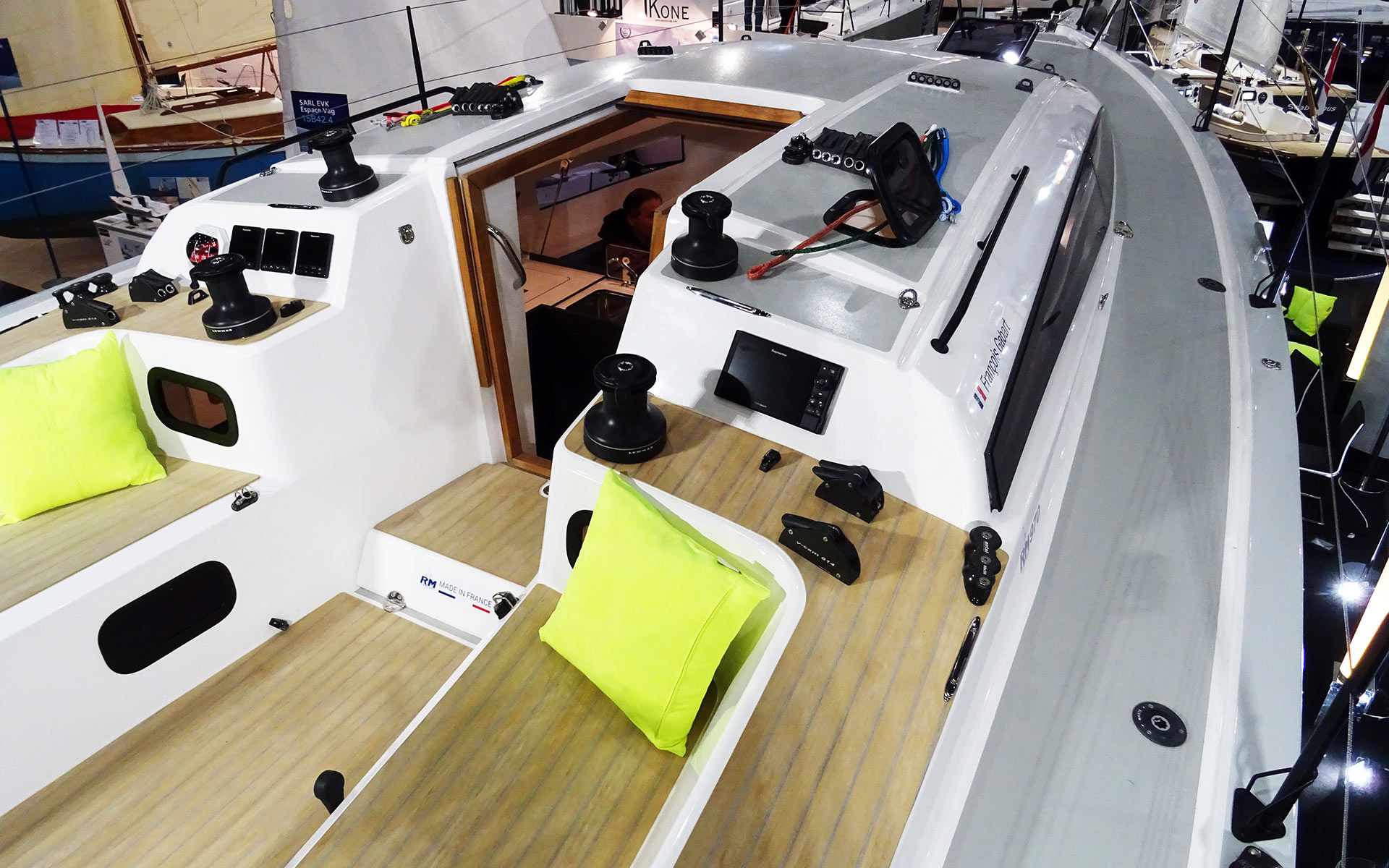
Marc Lombard: “Doing CFD for a cruiser is in a way much simpler: Doing CFD-calculations for a cruiser´s hull is more like the proving of general concepts like appendages, certain aspects of a hull, and alike. So it´s treated in a more “general research program”, that we carry on every year on a different topic. What´s interesting to say about the design process: It´s not a linear from A to Z-development, but more like a loop. It´s a circle of steps that will be gone over and over again. It´s a change in the equation and then the concept will undergo the full circle again.”
About large volume boats
NFS.com: “Marc, taking a look at the market leaders with their large, volume-oriented boats I can´t help myself but to think of them designing their boats from inside to the outside. So to speak, the interior fittings will be made first and later they will see which hull could fit around. How are you making your boats?”
Marc Lombard: “I am a naval architect, so I am working both with the outside look but also with interior layout and circulation. So the “natural” way of making a boat is to design the hull envelope first, and to see then afterwards, what will fit inside, “reasonably”, to keep the boat within an “acceptable compromise”. Of course, you have to work on both sides, but you must stay within limits between “outside volume”, which is performance stability, and inside volume, so to speak of accommodation and comfort. Both are moving on with the progress in naval architecture. Look at 30 foot yachts 40 years ago and today: There is so much light in modern boats, so much volume. Comfort did increase manifold – that´s due to a change in the designer´s minds to not solely approach a project from the full perspective. Making much more investigation for solutions to make boats better in a way of adding more space inside.”
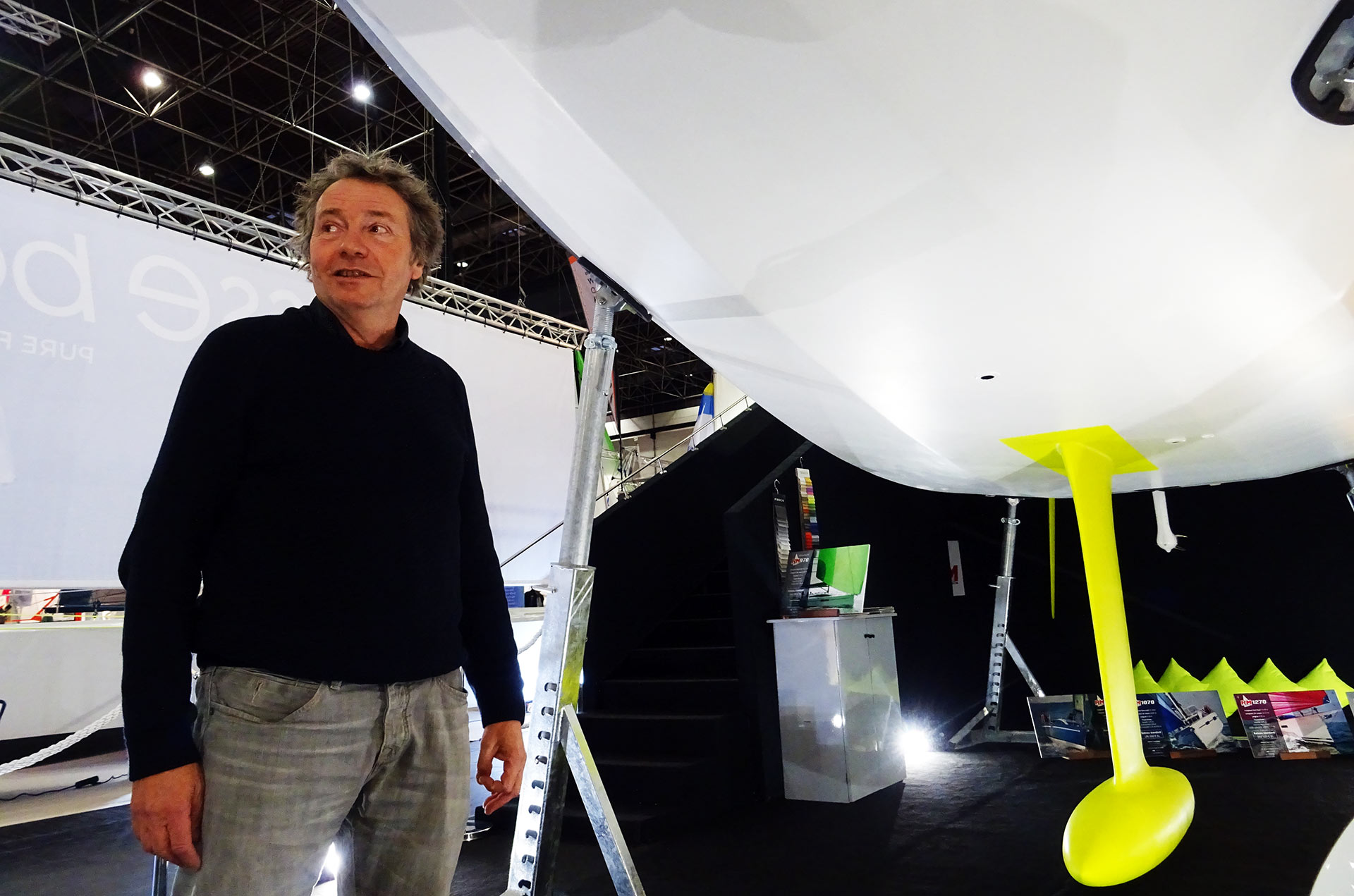
Marc Lombard: “Also, the design process depends very much from the starting point. Look: If your client, let´s say a large production boat company, does already have a number of boats of all sizes, then a new project must fit in between two already existing boats. Then size will dictate your work. If a company doesn´t have too many boats of different sizes, than it´s mostly your work to carry on the study to make a boat from the starting point of a certain inside volume.”
On the design briefings by his clients
NFS.com: “Tell me more about a yard´s “design brief” you work with. For example the one from RM and this beautiful RM 9.70.”
Marc Lombard: “Design briefs depend very much on the yard itself and one cannot generalize it. But, in a “design brief”, there is often a “misunderstanding” between “program” and “specification”. So, what´s a program? It´s a set of different things the clients want to get with a new boat. Inside and outside. This is totally in the client´s hands and that is what should be a “design brief”. Specifications as opposed, is the job we, as a design office, are doing: Turning the program into numbers: Length, width, draught, sailplan and so on. This is totally in our hands.”
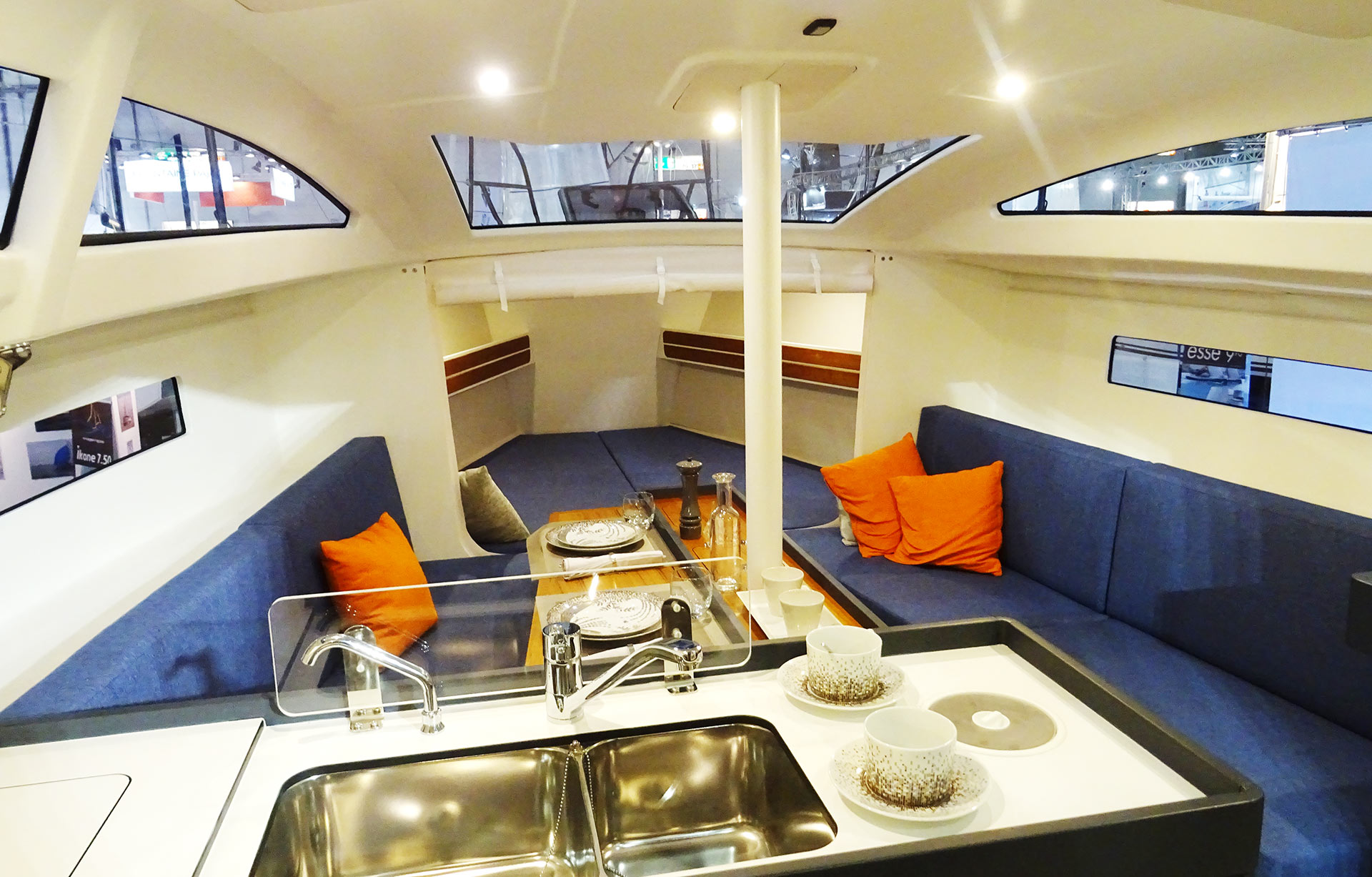
Marc Lombard: “The thing about these two aspects of design process is, that some clients, mainly private, or “non professionals”, come up with specifications instead of a program. Which “generally” won´t work. You cannot say “I want my boat to be 12.75 meters long and 4.67 meters wide with a 2.20 meters keel, and 5 cabins inside”. It just won´t work because you make the last step before you did the first. With “professional yards”, they come with a program, and we discuss specifications together up to the level where we find the best compromise. With RM, we have been able to work in such a way, introducing ideas and discussing them, and that’s why these boats are really fantastic.”
NFS.com: “So what was the program of RM boats?”
Marc Lombard: “We wanted to create very nice looking, sexy and fresh yachts. They should have a high-performance potential but should be also cruiser-like. The yard has always been open for ideas. And as they were a relatively moderate sized yard with moderate output in terms of numbers, the market´s dictate isn´t really there to make uniformized or standardized models. They focus more on a specific side of the market. Smaller yards often tend to be more open toward ideas and new approaches than larger yacht companies who won´t buy into new concepts because they have to satisfy a large range of clients, and cannot take the way of as they would call it “risky ideas”.”
NFS.com: “Do you have an example?”
Marc Lombard: “Take the inverted sheer and the chines of this RM. We have been the very first company to re- introduce them in a modern way of design, first on racing, then on production boats. Because we were convinced of the potential progress that it would allow in both stability, performance and inner volume, we have been able to convince the yard Fora that this was the future. Now look at the actual offer of sailing boat’s builder: 5 years later, chines are common sense on very many models. But this comes just after “innovative” yards have proved the concept.”
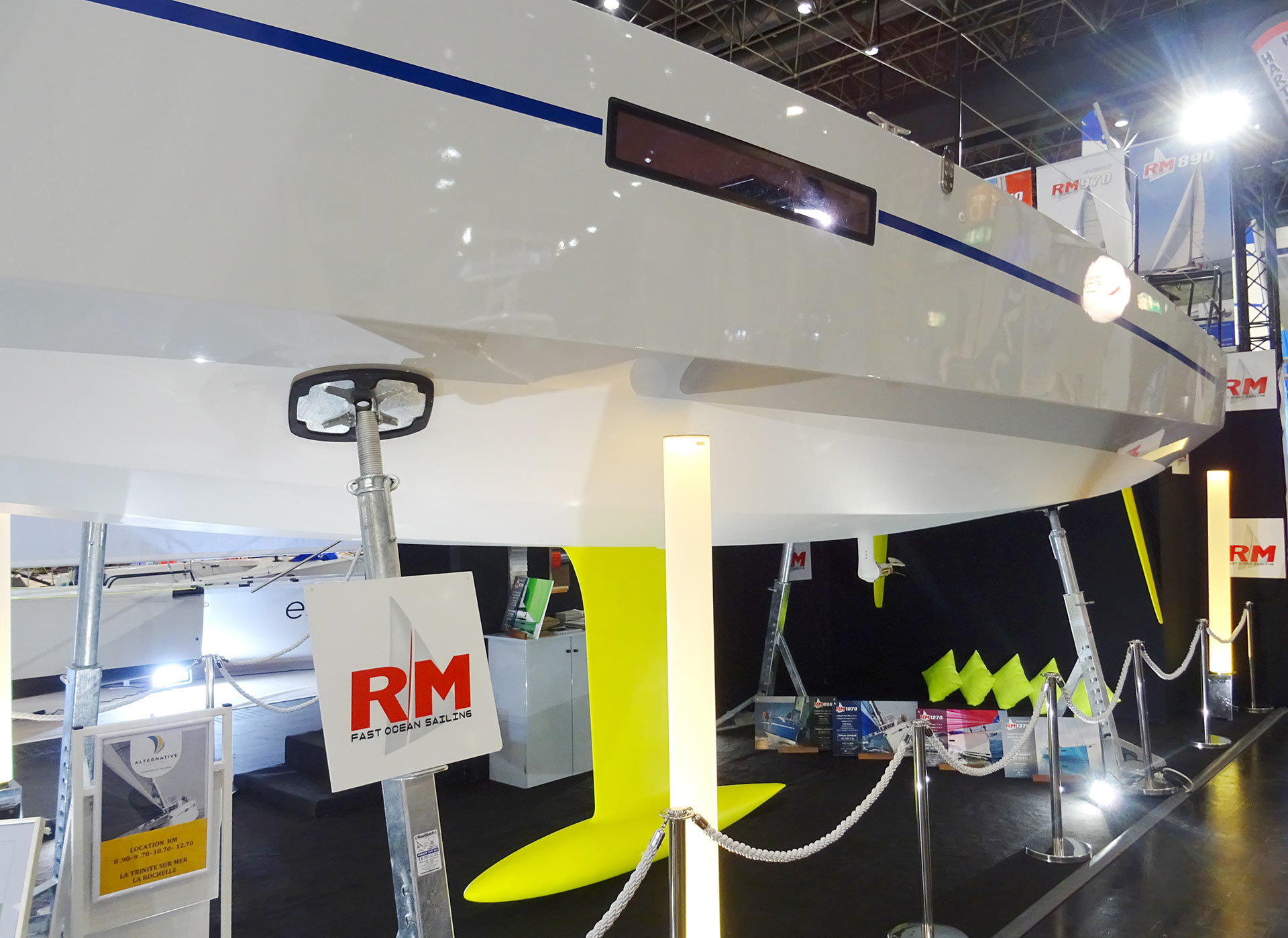
Marc Lombard: “Smaller yards can deliver proof where bigger companies are too immovable. Sometimes, the way yachts of “innovative” yards are made now will be the way bigger company´s yachts will be in 10 years, but sometimes they also disappear, as ideas where wrong, or the market did not react positively…”
On RM sailing yachts and plywood material
NFS.com: “This beauty, the RM 9.70, is made of plywood. Why did you choose this material for the hulls?”
Marc Lombard: “Actually, RM hulls are as well as GRP-hulls a mix of different components. I´d like to call RM-hulls resin-infused plywood composite. Most people tend to think that this is solely wood, but it isn´t. Plywood composite is indeed a very strong material, much stronger than bare GRP. We started using this technology some 20 years ago. RM – the yard had a different name back then – wanted to refit a plywood-boat. During this process we discovered the advantages of working with epoxy infused plywood. We were the first do develop a construction method for serial production.”
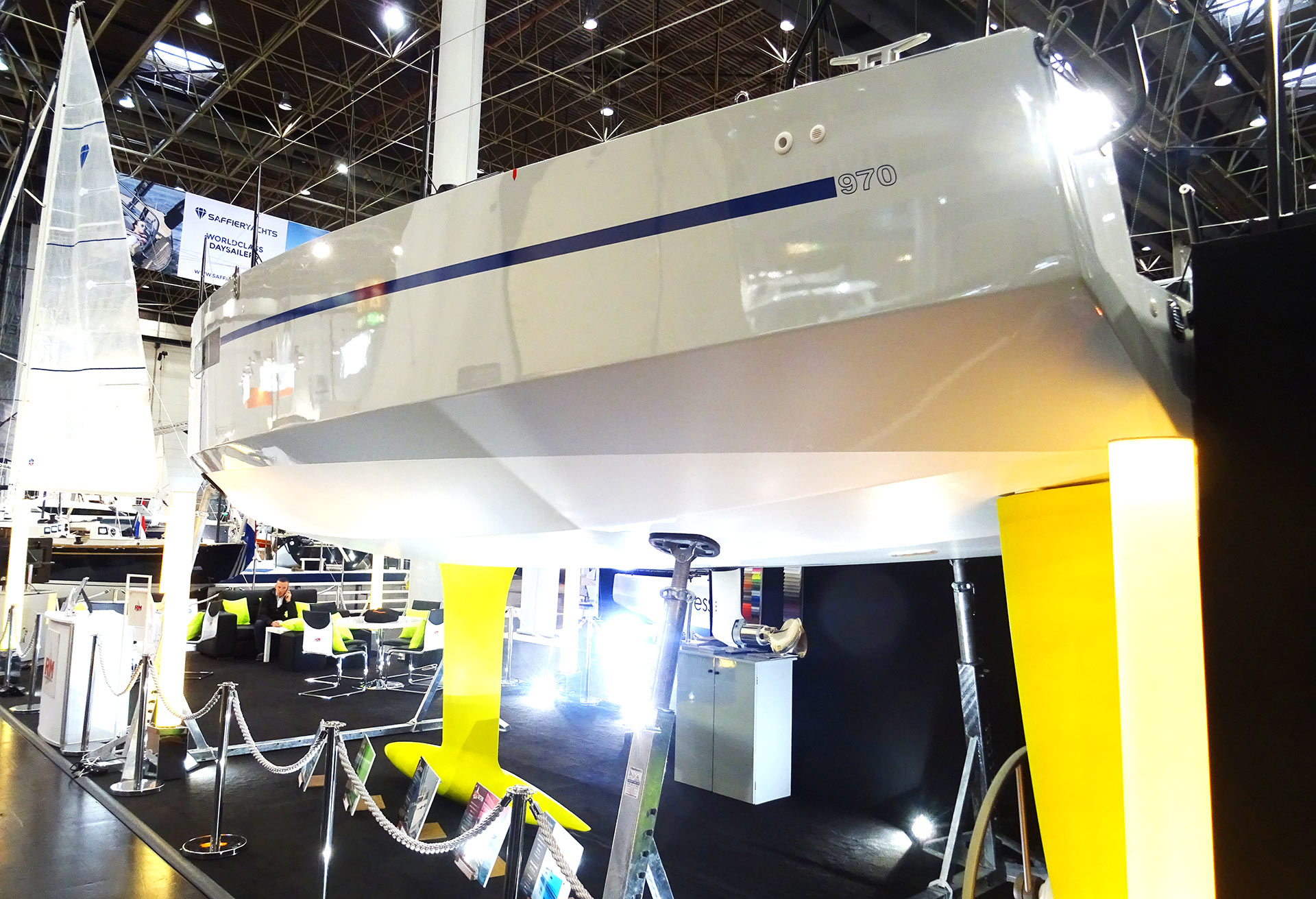
Marc Lombard: “We are now able to produce this material in a very fast and efficient way. Wood has an excellent weight-to-strength ratio. If you´d take 10 kilogram of steel and compare it with 10 kilogram of timber you will discover that wood is much, much stronger. So in the end, with plywood we are getting a stronger hull that weighs less. On the other hand, it´s also more expensive I should add. Making a plywood-epoxy hull is some 20 to 30% more expensive compared to GRP. And still it´s difficult. Deck structures and generally curved structures are hard to make. That’s why the deck of RM boats is made of pure GRP. But speaking of plywood: I consider it of superior strength. It´s a small market indeed, but a very interesting one.”
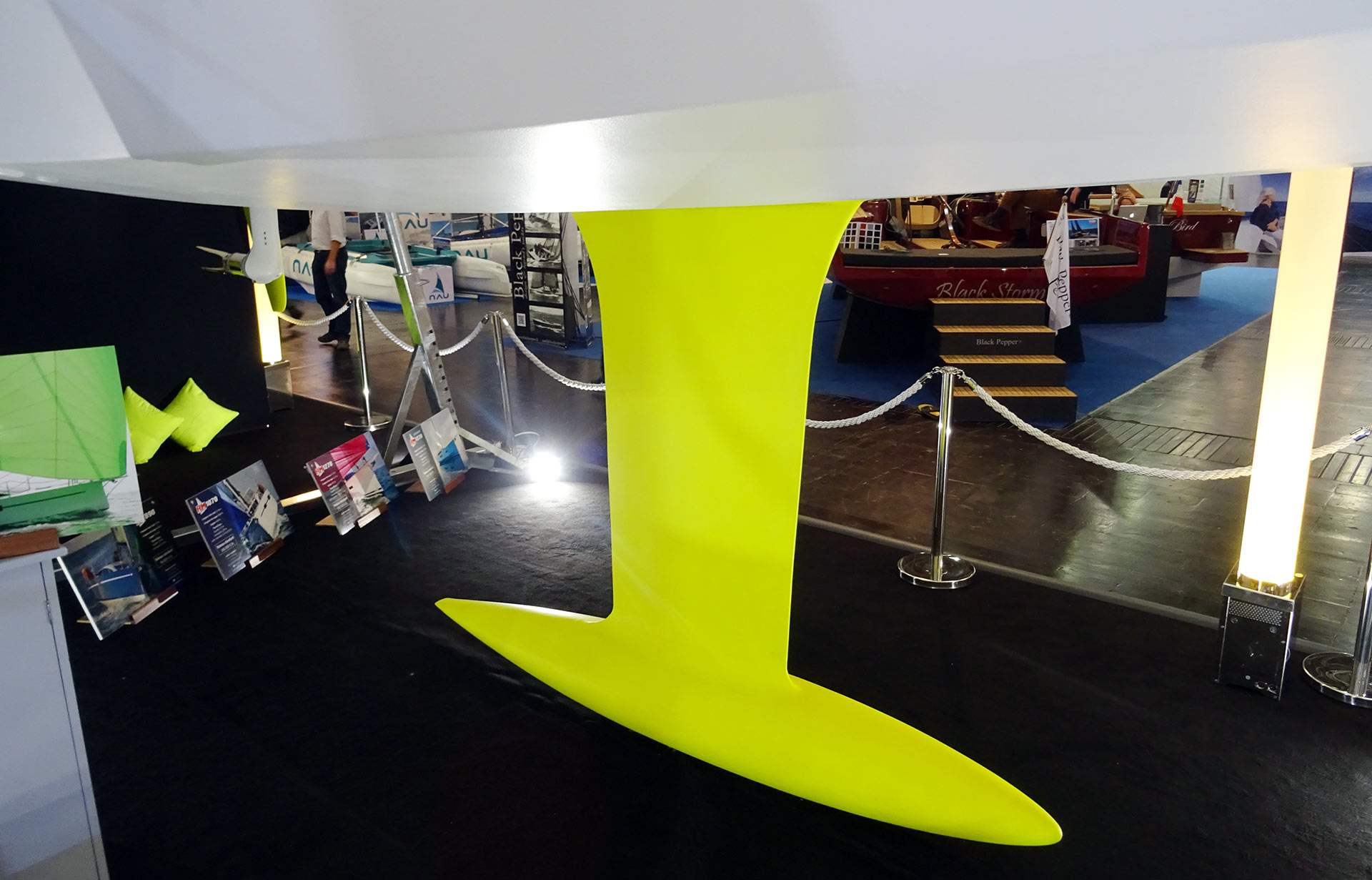
NFS.com: “And she is definitely a pure beauty, a sexy beast indeed! Last question for today, Marc: If there wasn´t any clients and you would make a sailing yacht for yourself, what would this yacht be looking like?”
Marc Lombard: “Well, I was always making yachts for myself. As a young boy, I was designing and building a dinghy for myself, later a fast catamaran which I enjoyed very much. Than I also made a fast cruiser for my family when I got married and children arrived, a racing monohull of class 9.50 to have fun is now a boat I frequently sail. Right now I am working on a cruising catamaran. I love all sorts of boats. So, in a way, my personal favourite yachts has always been a translation of my life onto the water.”
NFS.com: “Marc, thanks so much for taking your time and again answering my questions. All the best for you and I look forward to admire all those coming designs by you and your team in La Rochelle.”
I also spoke to Umberto Felci, Charly Fernbach, Magnus Rassy and Franco Corazza on designing sailing yachts pulling the same questions, please check hashtag #designingayacht to browse these very interviews.
Other interesting articles:
Marc Lombard and Charly Fernbach on French Sailing Philosophy
Designing the fore cabin of my yacht
The Legacy of FIGARO 2 racing yachts
